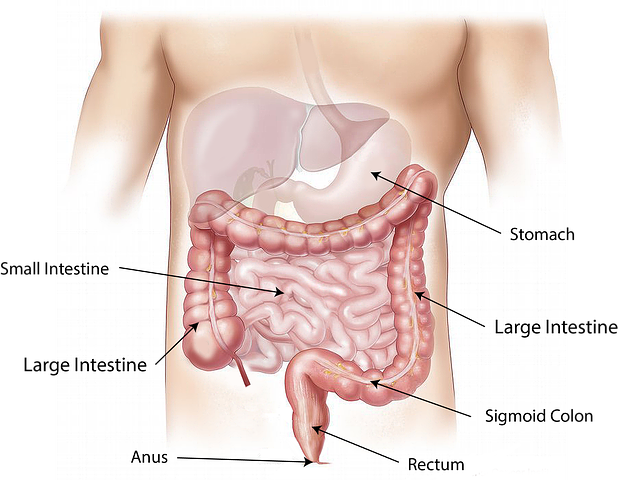Nursing Diagnosis, Care Plan, and Interventions for Impaired Urinary Elimination- A Student’s Guide
Introduction
The body is a complex system of organs and processes that work together to provide the body with sustenance for it to survive. One such organ that performs an important role in this process is the urinary tract. It filters out excess water, electrolytes, acids, and other things from your bloodstream, so they are not reabsorbed back into the bloodstream. If there is an issue with any portion of this process, then you may experience impaired urinary elimination (IUE).
This post will explore some causes for IUE, nursing Diagnosis, Interventions, and Care plans.
As you read, keep in mind that our top writers are ready to help in case you get stuck or cannot complete your nursing assignment due to other reasons such as a busy schedule. All you need to is place an order with us!
Disclaimer: The information presented in this article is not medical advice; it is meant to act as a quick guide to nursing students, for learning purposes only, and should not be applied without an approved physician’s consent. Please consult a registered doctor in case you’re looking for medical advice.
What is Urinary Elimination?
Urinary elimination is the process of eliminating wastes from the body in urine. The kidneys remove waste products and byproducts from the blood by changing them into a form that can be passed into urine, subsequently excreted out of the body. The urinary tract system includes the kidneys, ureters, bladder, and urethra.
What is Impaired Urinary Elimination?
Impaired urinary elimination is the inability to remove body wastes from the kidneys in urine. This could be due to conditions that obstruct or interfere with bladder emptying, such as an enlarged prostate gland or a blockage in the urethra (such as catheterization).
What Causes Impaired Urinary Elimination?
There are many possible causes for impaired urine production and excretion. Many of these can be divided into two categories: obstructive causes and non-obstructive.
Obstructive Causes
Usually due to enlargement of the distal urethra and bladder or narrowing of the urethral lumen. These obstructions are considered partial if there is some flow through the obstruction without severe discomfort. Obstruction can result from benign prostatic hyperplasia (BPH), urinary tract infections (UTIs), urethral strictures, or bladder stones, as well as a pelvic mass.
Non Obstructive Causes
- Infection such as UTI or prostatitis
- Vaginal yeast infections (Candida)
- Autoimmune disorders like Lupus
- Dementia
- Diabetes mellitus type 1 or 2
- Parkinson’s disease
- Other factors such as fever, dehydration, or a lack of fluids can also contribute to an inability to urinate normally
Signs and Symptoms of Impaired Urinary Elimination
- Frequency or incontinence
- Urgency to urinate
- Pain during urination
- Difficulty starting urination
- Blood in the urine (hematuria)
- Cloudy urine due to bacterial infection
- Increased thirst
- Unusual discharge from the reproductive organs (dysuria)


Nursing Diagnosis of Impaired Urinary Elimination
Impaired skin integrity
Impairment in skin integrity may be related to impaired urinary elimination.
Problem with passing urine.
This can include a decreased amount or quality of urination, foul odor in urine, difficulty in starting to pass urine, straining while passing urine, pain during urination, or having to go many times and still not fully empty the bladder.
Nursing diagnosis of impaired urinary elimination is the nursing diagnosis that encompasses any abnormality in urination. This includes both the frequency and volume of urine output and the ability to void completely.
Assessing Vital Signs
Nurses will assess a patient’s condition for this problem by assessing vital signs such as pulse rate and respiratory rate, examining physical findings such as skin turgor or edema, and noting the presence of symptoms such as severe dysuria or nocturia.
Restricted Activities
Restricted activities of daily living because of increased incontinence, frequency of urination, or spasm episodes. The person may have been able to perform basic daily activities before the problem began, but now they are limited in some way.
Impaired Physical Mobility
Impaired physical mobility related to impaired urinary elimination.
Impairment in Body Image
Impairment in body image of self and others due to loss or change in bladder control. It may include shame, embarrassment, or feelings of inadequacy because of leakage or odor related to incontinence.
Abnormal Substances in Urine
At times, abnormal urine contains substances that are not normally found inside blood vessels, and these signs can be used to detect the disease. Common examples are protein, glucose, and blood, which can be easily identified due to their different colors (red or pink; protein white in color; and glucose, a clear, colorless liquid).
Other Diagnosis
The nurse should also be aware that many other conditions can cause impairment in urinary elimination, including:
- Urethral stricture
- Prostatitis
- Bladder cancer
- Pain due to irritation
- Urinary frequency
- Urinary retention
Care Plans for Impaired Urinary Elimination
- Assess their symptoms and complete a thorough physical exam, including checking for any signs of infection such as fever, pain during urination, blood in the urine, or the need to urinate numerous times during the night.
- Assess their intake and output. Observe for changes in skin color and turgor (peaked skin) and any edema present on physical exam.
- Ask about any medications they are currently taking as some medications used to treat other conditions can also lead to problems with urination.
- Ask about any recent changes they have noticed in their urinary routine or other symptoms.
- Take care of fever, chills, pain during urination. Check whether the patient is experiencing back or abdominal pain (which are suggestive of a kidney infection).
- Monitor vital signs such as skin color, breathing rate, and heart rate.
- Assess the patient’s voiding pattern. This includes their ability to urinate, the amount of urine produced, and any associated discomfort or pain.
- Assess for cloudy urine. It is very common for older adults to have a white or yellowish cloudiness in their urine. This is often normal, seeing that it just represents either extra fat, calcium, protein, or dead cells in the urine.
- Monitor the patient for any signs of dehydration by checking their skin turgor, eyes, and mucous membranes.
Nursing Interventions for Impaired Urinary Elimination
- Bladder training may be used in older patients who have not had their bladder emptied frequently and in those with an enlarged prostate gland that causes difficulties controlling urination.
- Frequent bladder training teaches the patient to void at regular intervals.
- Incorrect technique or misuse of the catheter can lead to a UTI. The patient should be taught how to empty the catheter and when to notify the nurse if it becomes clogged.
Complications
Left untreated, this could lead to renal failure because the kidneys will no longer be able to excrete waste products from the body efficiently, resulting in an accumulation of toxins that can cause further damage if not addressed.
Treatment of Impaired Urinary Elimination
- Treating the underlying cause is essential for relieving urinary retention.
- Resolving infections, such as UTIs and prostatitis, can help with urinary retention (antibiotics).
- Enlarged prostate may require surgery or drugs to help relieve symptoms related to urination.
- Treatment for many types of inflammation can also be done through the use of non-steroidal anti-inflammatory drugs (NSAIDs) like ibuprofen or naproxen (Aleve, Naprosyn).
- Relieving symptoms of bladder spasms can be accomplished through relaxation techniques used during urination.


Summary
Urinary retention is the inability to completely empty the bladder. It is classified as either acute or chronic. The condition is most common in men due to prostate enlargement and older adults. Treatment is possible with managing the underlying causes, resolving infections, such as UTIs and prostatitis, and through the use of non-steroidal anti-inflammatory drugs (NSAIDs).







